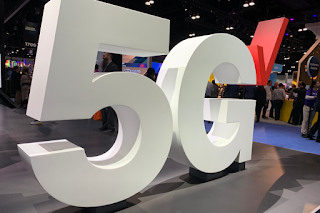Verizon achieved an upload speed of 1.26 Gbps in lab testing of its 5G Ultra Wideband technology. The lab work and trials in the field focused on optimizing the customer experience, and used 20 MHz of LTE spectrum and 400 MHz of mmWave spectrum from the 28 GHz band. The trials used devices currently commercially available and were completed in a live network test environment.

Past trials have shown extraordinary download speeds with various combinations of spectrum reaching 4.3 Gbps download speeds by aggregating Verizon’s mid-band C-band spectrum with high band mmWave spectrum.
Verizon won C-Band licenses for between 140-200 MHz in all available markets, and began in the first 46 areas deploying up to 60 MHz, quickly expanding to an additional 30 markets deploying up to 100 MHz in many of those. Over the next few years, as additional spectrum is cleared by satellite companies, Verizon will be able to deploy 5G Ultra Wideband on all available bandwidth that it has licensed, up to 200 MHz. Every piece of equipment being deployed today is capable of using the full 200 MHz of bandwidth. When the full breadth of spectrum is accessed, Verizon said customers can expect peak download speeds to reach 2.4 Gbps, up from the 900 Mbps experienced with 60 megahertz deployed.
Verizon holds a total of 2,035 MHz of spectrum – 294 MHz in Sub 6 GHz spectrum (low and mid band) and 1,741 MHz of mmWave spectrum (high band).
- Low band: Verizon’s low band spectrum (nationwide 700 MHz licenses and 850 MHz spectrum) continues to provide the best 4G LTE experience in the industry and now also supports nationwide 5G service, giving customers in over 2,700 markets access to 5G. Low band signals travel great distances and penetrate through walls and dense foliage very effectively.
- High band: Verizon’s mmWave build is a critical differentiator and the company continues to expand its mmWave footprint to deliver game changing experiences for the densest parts of the network. mmWave brings the benefits of highly predictable signal waves leading to greater efficiency and less interference for customers, and also boasts huge capacity. mmWave service is ideal to deliver 5G service in high-usage areas like cities, venues, and stadiums for years to come.
- Mid-band: Verizon’s mid-band spectrum assets include AWS, PCS, CBRS and C-band spectrum. C-band provides a valuable middle ground between capacity and coverage for 5G networks, and is enabling greater speeds than 5G on low band spectrum and greater coverage than mmWave spectrum for both mobility and home broadband solutions. The addition of C-band spectrum paves the way for Verizon to provide its differentiated service of 5G Ultra Wideband service to millions of customers, now covering more than 175 million and growing quickly.














